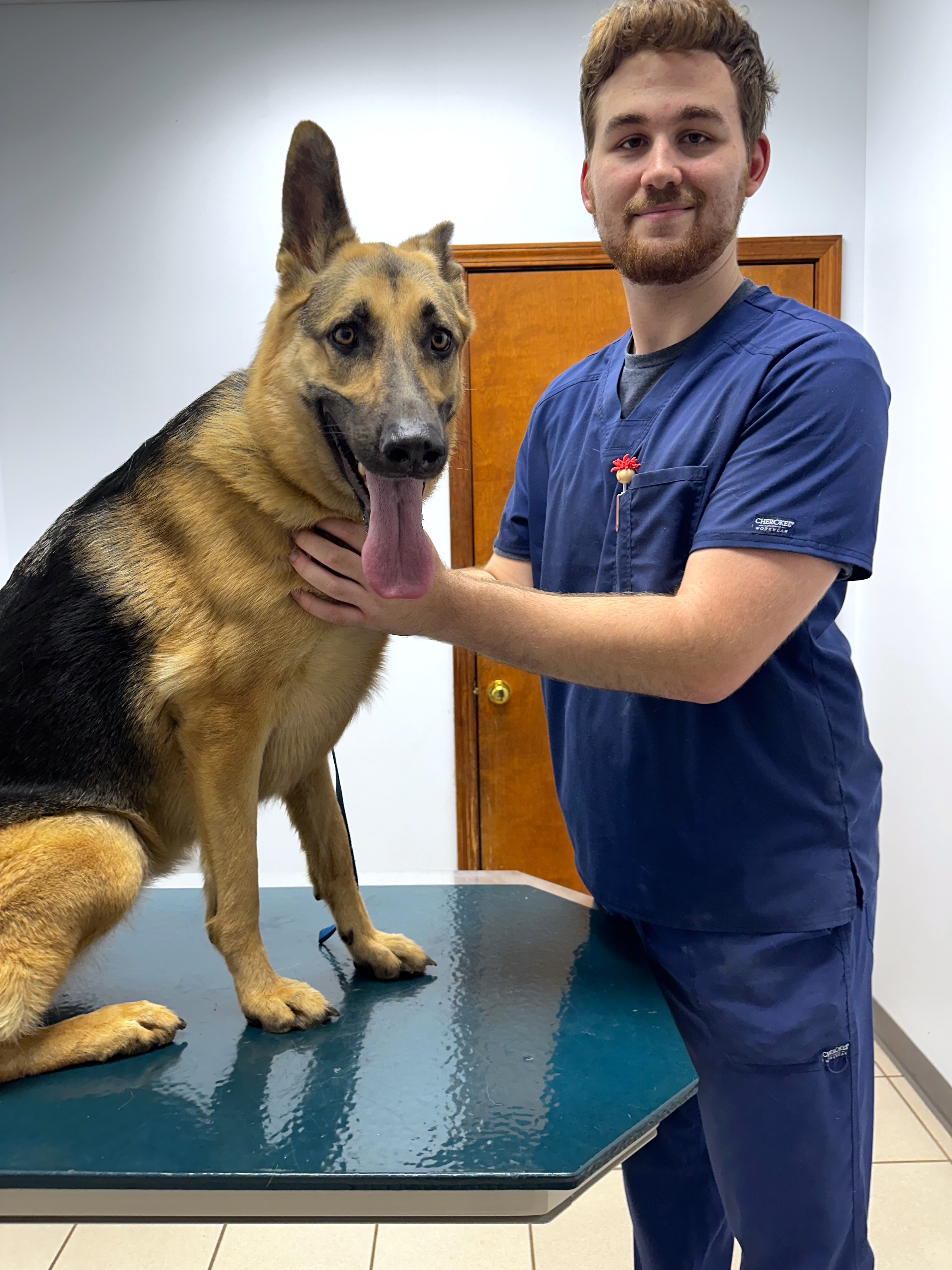Pet ownership numbers continue to skyrocket, but the number of veterinarian doctors in the field providing diagnoses, treatments, surgeries, and other critical services lags well behind.
Brayden Spurlock ’27, a lifelong pet owner and lover of science, plans to be a part of the solution.
 “There’s not enough veterinarians in the world,” he said. “Knowing that reality and my passion for animals, why not try to become a vet and help?”
“There’s not enough veterinarians in the world,” he said. “Knowing that reality and my passion for animals, why not try to become a vet and help?”
This summer, the biology major and chemistry minor is working as a veterinarian intern under Dr. Walter Mullen at Animal Health Services in Columbus, Mississippi.
Spurlock talks about interning for the veterinary clinic, the lessons he’s learned, and his goals for the future.
Q: What does an average day look like for you?
My main responsibilities include utilizing the microscope skills I learned in Wabash biology labs to detect parasites such as heartworms in blood samples. The microscopes are also used for fecal sample testing to scan for various parasitic worms, mainly hookworm and roundworm.
I primarily assist with physical examinations of patients, and record their weights and temperatures prior to examinations. I have become more proficient with drawing vaccines and understanding which are appropriate at what age level and using the appropriate vaccines while maintaining a sterile environment.
Aside from the microscope skills, what other experiences do you find yourself pulling from as a Wabash student during the internship?
Wabash has taught me how to be a good listener and an effective communicator. All of the heavy writing I did freshman year has proved to be really helpful because everything I do involves documentation. I record results of parasitic tests in the patient’s profile after each visit. I’m making detailed observations each day about certain patients that we see. If they are hospitalized more than a few days, I continue tracking their progress and behaviors, and add key notes to the file to help the doctor with diagnosis and overall progression.
What do you see as challenges in this kind of work?
The most challenging part of this kind of work is making sure I’m 100% certain on everything I am looking at. There is too much at stake to make a small mistake or skip over possibly seeing a parasite in a sample. It’s a balancing act, trying to be both precise and efficient. You can’t take too long, but you also have to make sure you don’t miss something. That can be pressuring at times, especially when you have to cycle that between cleaning the room for the next patient and getting vaccines prepped and drawn at the right amounts.
What have you enjoyed the most about the internship?
I’ve really enjoyed getting to know all the different clients—both the animals and their owners. There are always new ones who come through, but it’s been fun to connect with the different dogs and cats who have been coming here for years. Seeing the satisfaction from the owners with the care their pets receive and playing a role in that is very rewarding.
There were a lot of things I did not know going into the internship—like drug names and how to file prescriptions. Everyone here has been patient and supportive in helping me figure it out as I go. I’m never bored. There’s always something new to do or learn every day.
What interesting experiences can you share?
![]()
I’ve had a lot of fun experiences with Dr. Mullen. He’s shown me new ways of looking at things under the microscope using dyes, for example, which is something I didn’t expect to do here. One time, he put dye on a dogs’ eyes to check for membrane damage. I was able to assist with the UV light and examine the different layers of the eye, checking to see if any stained a certain color, which helps with diagnosis.
We had to sedate a dog recently because a stick stuck in the roof of his mouth while he was playing. It just would not move, so we had to put him to sleep for a little bit to be able to remove it. It was a weird experience because we didn’t have to use a tool or break the stick after we sedated him, it just popped out. He was one happy boy after it was all done.
What do you hope to get out of this experience? What are your goals?
My goal with this internship is to receive a great introduction into veterinary medicine and what I can expect from this career each day. If this is my career choice, I hope my passion for animals remains strong. I want to learn more about the parasites and diseases that affect pets, and how I can help ensure a great quality of life for them and their families. This internship has already taught me a great deal of the responsibilities of a veterinarian that I hope to be ready to take on after attending graduate school.